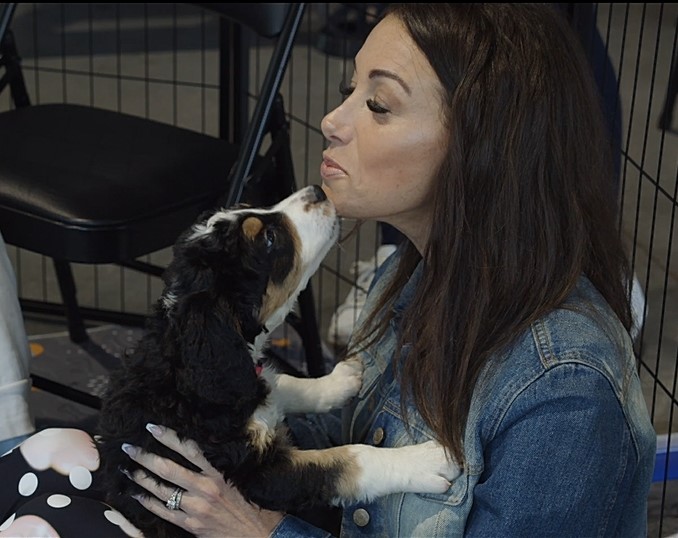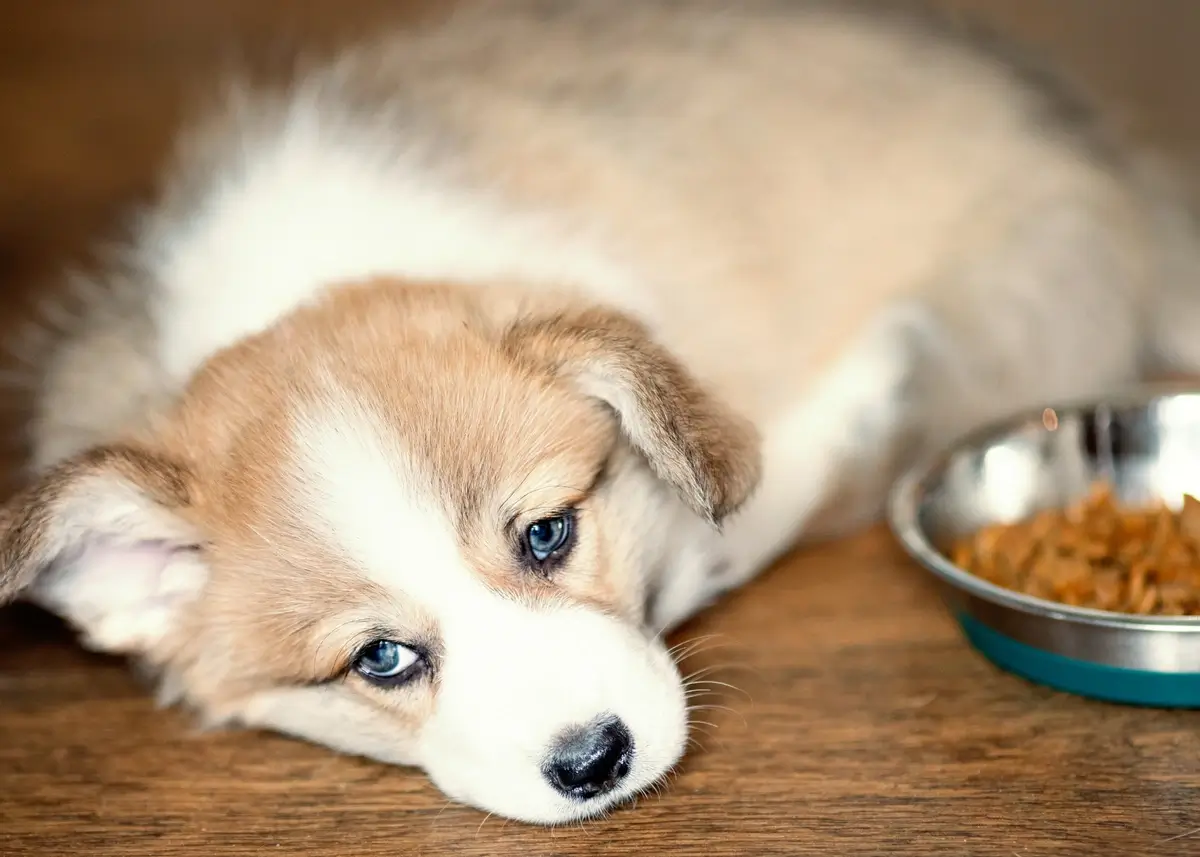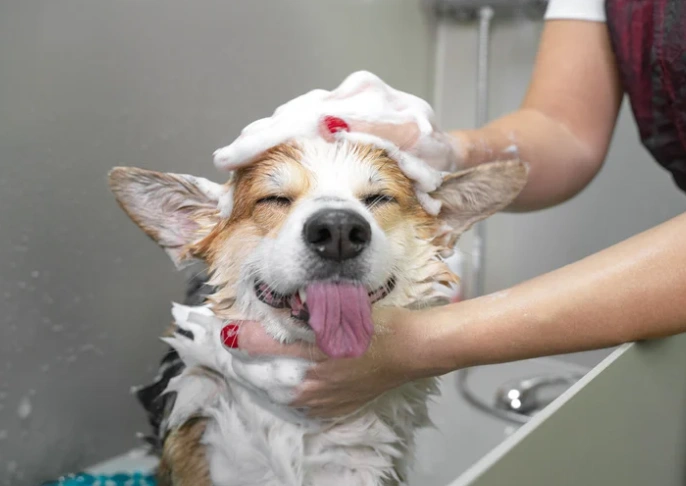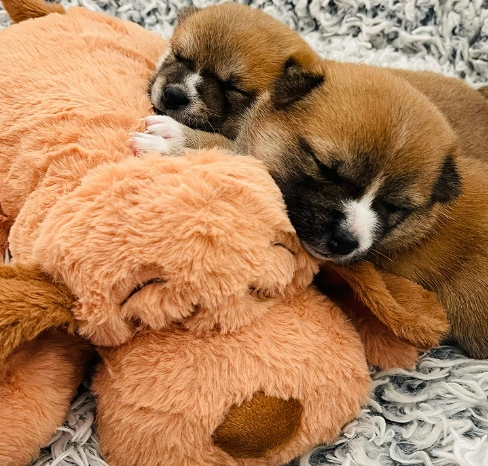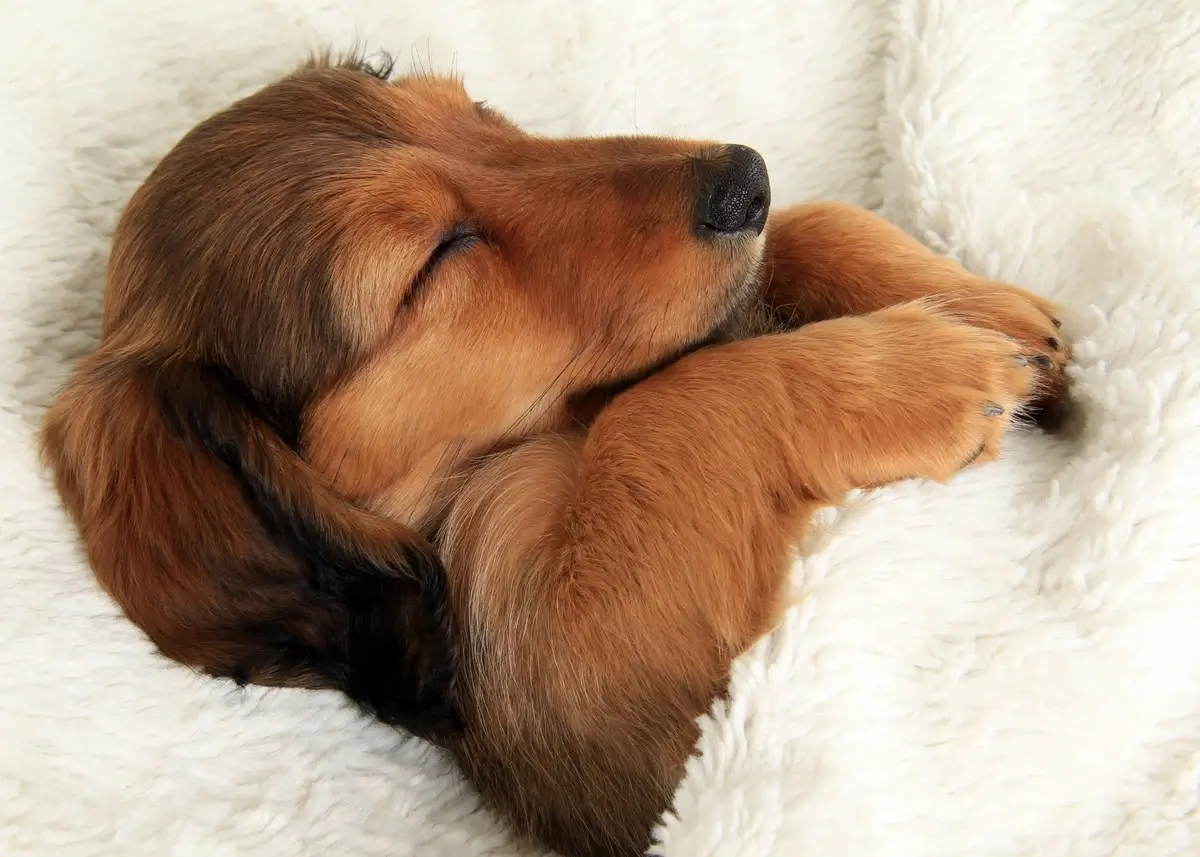“Luuuucy! I’m hooooome – with a new puppy!”
The day has finally come! Your wiggly new puppy is romping around your home intrigued by the squeals of delight from your children (and who are we kidding – from you as well)!
But now what?
If you aren’t sure what to expect in the first 48 hours with a puppy, our comprehensive guide will help you introduce your puppy to its new home as a member of your family for years to come. It all starts with a great foundation.
What to Know Before Adopting a Puppy
Before adopting puppies for sale through Pawrade, you will want to be prepared and know what to expect when bringing home a new puppy so things go as smoothly as possible.
Our resource center hosts a plethora of topics for potential puppy pawrents. Here are some articles that we recommend reading before bringing home a puppy:
- Preparing your home for a new puppy will help you get your space completely ready and puppy-proof.
- Avoiding new puppy parent mistakes will have you acting like a pro (or faking it till you make it)!
- Listening to those who have been through the first year or two with a puppy by examining 20 things owners wish they knew about getting a puppy will show you realistic expectations.
- Having a variety of puppy toys for young dogs will give you some fun ways to bond with your puppy.
- Speaking of toys, you should run your numbers in your budget and be a financially responsible puppy owner. For the first 48 hours especially, allot some funds in case you have to pivot and run out to buy things you weren’t expecting. Sometimes the things you choose before meeting your puppy are not actually what you need.
- We will frequently mention crate training, so knowing how to choose the right crate for your puppy will help when eyeing crates in the pet aisle so your puppy doesn’t wander around the house when they’re not supposed to.
- Protect your puppy’s identity by microchipping it, providing a collar with your contact information, and keeping it on a leash at all times. Never leave your puppy alone. You don’t want your puppy to wander off or even worse, a puppy napper to snatch it up.
Having a positive attitude
Adopting a puppy is exciting, but it isn’t always sunshine and roses. No matter how prepared you are, expect to feel a variety of emotions in a short time! You can be elated when your puppy snuggles up to you and frustrated if you step in something unpleasant the next second.
It is paramount you control your emotions by not taking it out on your puppy. They’re having quite a time adjusting to a new environment and have only known the comfort of their mother and littermates.
Have realistic expectations by knowing your puppy will need a lot of time to get acclimated to your home and its new life. Keep in mind the 3-3-3 adjustment period for puppies in new homes:
- 3 Days: Your puppy will feel overwhelmed and nervous
- 3 Weeks: Settling in by learning its name and a new routine
- 3 Months: Building trust and forming a strong bond
Hunker down & stay in
It’s important to carve out time to devote to your new puppy. Never leave them for long periods when they are this young. Think about it as going through puppy boot camp where you focus only on your puppy’s well-being. Your puppy won’t need to go anywhere the first 48 hours, as a vet visit is recommended only after 72 hours.
It’s tempting to want to take your puppy everywhere and have lots of people pet it, but they’re so vulnerable because they don’t have full vaccination protection yet. Don’t put your puppy down on any ground where there are potential parasites and infectious diseases until your puppy has had its three rounds of puppy vaccines and is fully vaccinated at 16 weeks. Parvo, coccidia, giardia, and many other parasites can be passed to your puppy from other dogs or animals.
Simple Puppy Schedule For the First 48 Hours
We’ll break down each component in detail later, but here is a sample routine and schedule for new puppies to follow. Feed your puppy according to your breeder’s recommendation (we picked three times here). This schedule also includes crate training your puppy. Your days might look different, and that’s okay, as all puppies and families aren’t the same. Note all the potty breaks!
Your 48 hours with your new puppy
- Potty break before entering home
- Bathtime and put on its new collar with ID tags
- Potty break
- Introduce to family (can happen throughout the day)
- Introduce the crate as a safe, positive place
- Playtime, bonding, simple training commands, leash walking
- Potty break
- Mealtime in crate
- Potty break
- Naptime in the crate
- Potty break
- Playtime, bonding, simple training commands, leash walking
- Potty break
- Naptime in the crate
- Potty break
- Mealtime in the crate
- Potty break
- Active playtime to tire them out
- Establish night routine
- Sleeping in the crate with frequent potty breaks
Welcome Home! The First Few Days With Your Puppy In Detail
Your puppy is in your loving arms! Here are some detailed tips for the first day with your puppy for a deep dive into each component of our recommended schedule.
Potty training
You will probably be thinking of how to potty train your puppy, and there are lots of ways to do so. The important thing is to pick one and stick to it, at least for the first few days, to see which method works best for you and your new furbaby.
Allow your puppy to relieve themselves before coming into the house for the first time just to get them used to the concept. Choose a simple command to associate with potty breaks, and praise them when they go. Keep some puppy treats on hand, and always give them lots of enthusiastic praise when they do go.
Puppies have very small bladders and digestive tracts, so be prepared to take them out as often as every 30 minutes or so during the first few days. We know that seems like a lot, but it’s crucial to establish this habit immediately to avoid accidents.
Always offer a potty break before and after each structured activity, such as playtime, mealtimes, and sleeping. Even if they don’t go, give them several opportunities throughout the day. Establishing a routine matters regardless of which potty training methods for puppies you choose.
When potty training outside, allow your puppy out and back in without eating, drinking, or licking anything off the ground, especially until fully vaccinated at 16 weeks. Parasites can live in the ground for as long as seven years and can make your puppy extremely ill. Remember that puppies are curious by nature and might eat their waste. You may wonder, “Why does my puppy eat poop?” Please know that it’s a normal thing puppies like to do, as gross as it is, so clean up your area after each bathroom break.
It’s normal for puppies to experience diarrhea due to the stress of separation and travel. Ensure you have plenty of fresh water accessible to ensure your puppy stays hydrated, keep pet-safe, enzyme-based cleaning supplies handy, and give frequent potty breaks.
Some people may use puppy pads if they live in a place without easy access to the outside, but other puppy owners advise against this for a few reasons. It may teach puppies that it’s okay to go in the house and will normalize that behavior. Puppies may rip into it, causing a very unfortunate scene in your house. Lastly, it can be an extra expense that you don’t need if you train them to go outside.
Bathtime
Your puppy may have gotten a bath before leaving the breeder’s, but it’s best to get a clean start. Sometimes puppies will get dirty in transport, which is normal. Bathing your puppy is a great way to bond and get them used to being touched all over, and you can speak soothing, upbeat words about how much you love them already.
Be sure to bathe them with a pet-safe shampoo for puppies, and rub them dry gently with a towel. Don’t introduce a dryer just yet because the goal for the next 48 hours is to minimize any frightening situations beyond the normal adjustment experience.
Mealtime
Always follow instructions from your breeder for what and when to feed your puppy. You’ll want to use the same formula of food your puppy is used to instead of trying to abruptly transition.
While we’ve said above to give meals in their crates, you may want to try free-feeding for the first days. After that timeframe, getting them more on a feeding schedule should be safe if your puppy is adjusting well.
Hypoglycemia in small dog breeds
Small dog breeds are very delicate, so free-feeding is especially important for at least 10-14 days. We recommend treating them like a newborn and making sure they eat every 2-3 hours due to the ability to become hypoglycemic quicker from lack of nutrition and caloric intake.
Make sure to give your small breed puppy Nutri-Cal 3 times a day for at least a week, and you can continue giving it to your puppy for longer. Nutri-Cal for puppies is a sugar and calorie supplement good for replacing sugars lost from the stress of travel and helps prevent hypoglycemia in puppies. Also, if your puppy seems not interested in eating or drinking, we encourage hand-feeding boiled plain chicken and rice, or even any wet puppy food to bounce them back. Karo Syrup can also be used to help in situations where your puppy seems a little sleepier and not bouncing back as quickly.
Establishing a bedtime routine
While some people want their dogs to sleep in the bed with them, it’s important to begin crate training them while they are a puppy so they are contained safely at night while you are sleeping.
A bedtime routine for a puppy is about creating comfort and security. Consider purchasing a Snuggle Puppy, a stuffed dog with a realistic heartbeat with a safe warming pack that helps reduce anxiety and allows everyone to get some sleep.
To further reduce anxiety, play soothing music for dogs in a darkened room. You can choose to sleep near your puppy the first few nights to provide frequent bathroom breaks, as puppies don’t like to soil where they sleep (in general).
Have nerves of steel
When establishing a nighttime routine for your puppy, your overall goal is to not reinforce behaviors you don’t want in the future. This is where you have to be strong and have nerves of steel. Remember, you’re setting your puppy up for a great life integrating into the family and you have to start day one.
However, this is much easier said than done, and don’t expect to get much sleep yourself. Be prepared for constant whining, crying, and barking at night while in the crate. You aren’t harming your puppy by keeping them in the crate.
The importance of crate training
We are advocates for crate training your puppy. Many people get the wrong impression that they’re putting their puppy in a “cage,” but the opposite is true. As one new puppy parent noted, it’s a den, not a prison. A crate serves several purposes:
- A safe space to retreat to when overstimulated
- A place to contain them when you are gone
- A cozy den for sleeping
- A place to eat a meal
It’s up to you to establish that the crate is a great place to be for a puppy.
Alternatives to a crate
When your puppy is not in a crate, consider using a baby gate for a small enclosed area like a half bathroom or an enclosed play area. Some people opt to have a puppy on a long lead inside to prevent roaming where they should not be. Always use a leash when taking your puppy outside.
Sleep
As energetic as your puppy may be, you’ll probably be surprised by this statistic about how much sleep a puppy needs. According to the AKC, young puppies sleep 18-20 hours a day. They are similar to infants in that important work goes on both physically and cognitively during sleep. A puppy’s body is developing rapidly, and it takes a lot of energy for the nervous system, brain, bones, and muscles to grow. Without enough sleep, a puppy can become overtired, anxious, stressed, aggressive, and other undesirable behaviors.
Do not wake up a sleeping puppy, not even in order to stay on a rigid schedule or go to the bathroom. Instead, go with the flow with a routine, and take potty breaks immediately after they wake up.
Avoid having your puppy sleep on you because you want to teach them to go to sleep on their own and not be dependent on you to catch some Zzzs.
Your puppy may fall asleep if it is exhausted, but you have to enforce naptimes just like toddlers. They will want to stay up and be right in the middle of all the excitement, but an overtired puppy is a naughty puppy. A crate can help with a sleeping routine to let their little bodies grow.
Socialization and training
Remember that dogs are pack animals. You must establish yourself as the pack leader right away. A puppy running the show may be cute, but that behavior quickly turns into a nuisance if your adult dog rules the home and won’t listen to you.
Easy commands to begin with are teaching your puppy its name and how to sit. Building trust by bonding with your puppy will begin an amazing relationship, so definitely keep that in mind when interacting with your new puppy.
Children will also need to be “trained” in how to treat a new puppy as a living thing and not a toy. For more details, check out 21 ways to introduce a new puppy to children.
We recommend waiting till after 48 hours to begin exposing your puppy to sounds like the blow dryer, vacuum cleaner, and other loud objects to allow them to settle in and get comfortable.
Spend a Lifetime With a Pawrade Puppy
At Pawrade, we love helping new puppy owners get used to their lives with our puppies for sale. Providing as much information as we can will help you get a great start when you bring home your new puppy.
Each puppy comes with a comprehensive 3-year health guarantee, 30 Days of MetLife insurance, and the promise of a scam-free, no-puppy mill pledge for robust puppies from reputable, vetted breeders.
Our Puppy Concierge team works diligently to provide you with a smooth adoption experience. Experience our excellent customer service paired with cute puppies, and all you’ll have to worry about is defending yourself from a barrage of puppy kisses. We hope this guide for the first 48 hours with a puppy has been helpful, and we’re here for you every step of the way so you can enjoy your new puppy.


